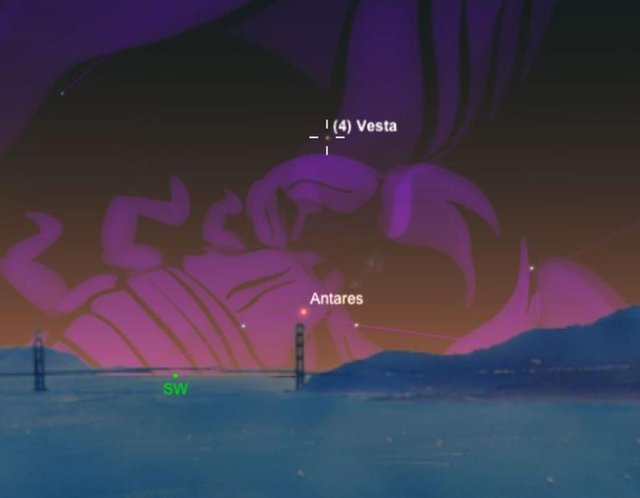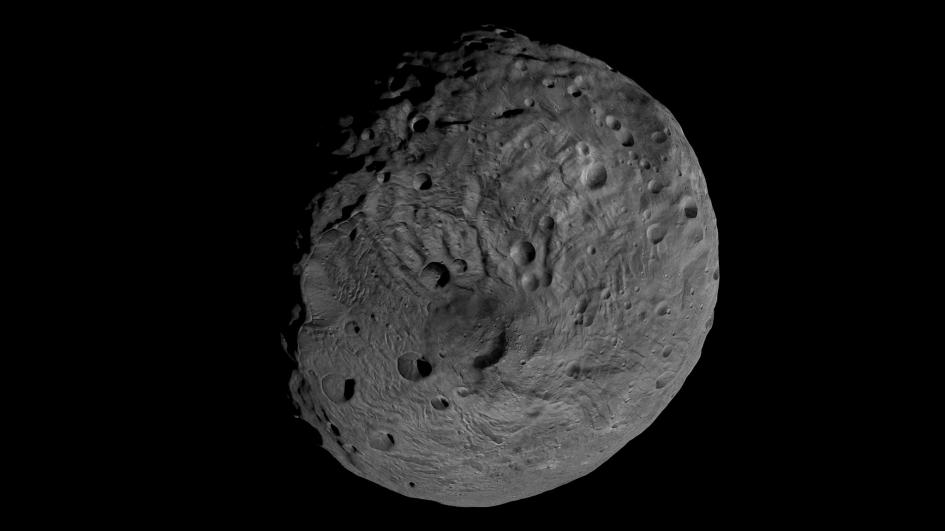Mystery of Earth's Water Origin Solved
This image obtained by the framing camera on NASA's Dawn spacecraft shows the south pole of the giant asteroid Vesta.
VIEW IMAGES
The south pole of the giant asteroid Vesta is seen in this photo taken with the framing camera on NASA's Dawn spacecraft.
PHOTOGRAPH BY NASA/JPL-CALTECH/UCLA/MPS/DLR/IDA
The water that makes Earth a majestic blue marble was here from the time of our planet's birth, according to a new study of ancient meteorites, scientists reported Thursday.
Where do the oceans come from? The study headed by Adam Sarafian of the Woods Hole Oceanographic Institution (WHOI) in Woods Hole, Massachusetts, found that our seas may have arrived much earlier on our planet than previously thought.
- ![103324907_1.jpg]
( )
)
This image obtained by the framing camera on NASA's Dawn spacecraft shows the south pole of the giant asteroid Vesta.
VIEW IMAGES
The south pole of the giant asteroid Vesta is seen in this photo taken with the framing camera on NASA's Dawn spacecraft.
PHOTOGRAPH BY NASA/JPL-CALTECH/UCLA/MPS/DLR/IDA
The water that makes Earth a majestic blue marble was here from the time of our planet's birth, according to a new study of ancient meteorites, scientists reported Thursday.
Where do the oceans come from? The study headed by Adam Sarafian of the Woods Hole Oceanographic Institution (WHOI) in Woods Hole, Massachusetts, found that our seas may have arrived much earlier on our planet than previously thought.
The study pushes back the clock on the origin of Earth's water by hundreds of millions of years, to around 4.6 billion years ago, when all the worlds of the inner solar system were still forming.
Scientists had suspected that our planet formed dry, with high-energy impacts creating a molten surface on the infant Earth. Water came much later, went the thinking, thanks to collisions with wet comets and asteroids.
"Some people have argued that any water molecules that were present as the planets were forming would have evaporated or been blown off into space," said study co-author Horst Marschall, a geologist at WHOI.
For that reason, he said, scientists thought that "surface water as it exists on our planet today must have come much, much later—hundreds of millions of years later."
Ancient Origins
But no one was certain. To pin down the exact time of the arrival of Earth's water, the study team turned to analyzing meteorites thought to have formed at different times in the history of the solar system.
First, they looked at carbonaceous chondrite meteorites that have been dated as the oldest ones known. They formed around the same time as the sun, before the first planets.
Next they examined meteorites that are thought to have originated from the large asteroid Vesta, which formed in the same region as Earth, some 14 million years after the solar system's birth.
"These primitive meteorites resemble the bulk solar system composition," said Sune Nielsen of the WHOI, a study co-author. "They have quite a lot of water in them, and have been thought of before as candidates for the origin of Earth's water."
Vestal Waters
The team's measurements show that meteorites from Vesta have the same chemistry as the carbonaceous chondrites and rocks found on Earth. This means that carbonaceous chondrites are the most likely common source of water.
"The study shows that Earth's water most likely accreted at the same time as the rock," said Marschall.
"The planet formed as a wet planet with water on the surface."
While the authors are not ruling out that some of the water that covers 70 percent of Earth today may have arrived later, their findings suggest that there was enough already here for life to have begun earlier than thought.
"Knowing that water came early to the inner solar system also means that the other inner planets could have been wet early and evolved life before they became the harsh environments they are today," explained Nielsen.
VIEW IMAGES
This sky chart shows Vesta's location in the southwestern evening sky above the bright orange star Antares in the constellation Scorpius.
IMAGE BY A. FAZEKAS/SKYSAFARI
See for Yourself
Circling the sun between the orbits of Mars and Jupiter in the main asteroid belt, Vesta is the second largest asteroid known and has an ancient, battered surface.
For sky-watchers with binoculars, the magnitude 7.8 Vesta looks like a very faint, starlike object in a sea of stars. It is visible low in the southwestern sky after dusk, about 6 degrees above the bright orange star Antares, but only from a dark location. For those stuck under light-polluted city skies, I recommend looking at the asteroid with a pair of binoculars or small telescope.

Angell Marie Boutte has been living in her home since 2007 without electricity and water. She’s one of a surprising number of New Orleanians who are homeless in their own homes after Katrina.

Nice info...
Thanks
Congratulations! This post has been upvoted from the communal account, @minnowsupport, by hi2rajiv from the Minnow Support Project. It's a witness project run by aggroed, ausbitbank, teamsteem, theprophet0, someguy123, neoxian, followbtcnews/crimsonclad, and netuoso. The goal is to help Steemit grow by supporting Minnows and creating a social network. Please find us in the Peace, Abundance, and Liberty Network (PALnet) Discord Channel. It's a completely public and open space to all members of the Steemit community who voluntarily choose to be there.